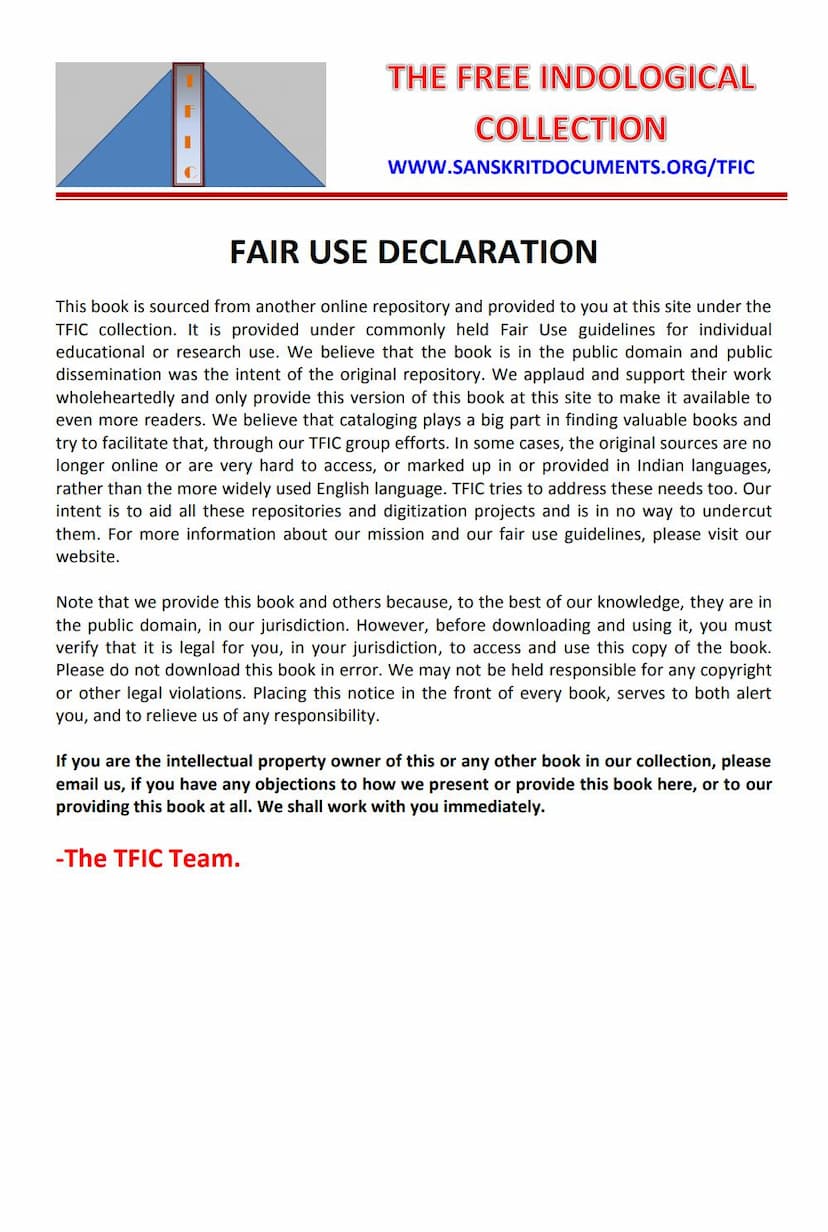Varddhaman
Added to library: September 2, 2025

Summary
Here's a comprehensive summary of the Jain text "Varddhaman" by Anup Mahakavi, based on the provided content:
Book Title: Varddhaman Author(s): Anup Mahakavi Publisher: Bharatiya Gyanpith
Overview:
"Varddhaman" is a Mahakavya (epic poem) that focuses on the life and teachings of Lord Mahavir, the 24th Tirthankara of Jainism. The title "Varddhaman" is derived from one of Mahavir's names, signifying growth and prosperity. While the poem draws inspiration from historical accounts of Mahavir's life, it is presented as a work of poetry, where the poet's imagination and artistic skill are used to embellish the narrative, rather than a strict historical biography. The book was published by Bharatiya Gyanpith, a renowned institution for promoting Indian literature and culture.
Key Themes and Content:
The poem is structured into 17 cantos (sargas) and comprises a total of 1997 quatrains (chhands). It is written in a Sanskrit-heavy language, reminiscent of the style of Harishchandra's "Priyapravas" and the author's own earlier work, "Siddhartha." The predominant meter used is Vanshastha, with occasional use of Malini and Drutavilambita for variety and the conclusion in Shikharini.
The cantos can be broadly categorized as follows:
- Descriptions and Nature: Cantos 1, 3, 7, 8, 10, and 11 heavily feature descriptions of nature and poetic imagery.
- Narrative/Story: Cantos 4, 8, 9, 12, 14, 15, 16, and 17 focus on the unfolding story of Mahavir's life.
- Love, Romance, and Entertainment: Cantos 2, 5, and 6 explore themes of love and romance, primarily through the portrayal of King Siddhartha and Queen Trishala.
- Renunciation and Teachings: Cantos 10, 14, 15, and 17 delve into themes of renunciation and the philosophical and spiritual teachings of Mahavir.
Artistic Merit and Poetic Style:
- Elaborate Descriptions: The poem is praised for its beautiful descriptions, word artistry (pad-lalitya), depth of meaning (artha-gambhīrya), and skillful use of rasa (poetic sentiment).
- Figurative Language: The work is rich in metaphors (rupaka), similes (upama), and other figures of speech, which are used to create vivid imagery. Examples include comparing Mahavir's mother, Trishala, to Saraswati, a river, and even the story of the Mahabharata.
- Emotional Depth: The poet attempts to evoke emotions through the portrayal of love between Siddhartha and Trishala, their philosophical discussions, and the spiritual yearning of Mahavir.
- Bridging Sectarian Differences: A significant aspect of the poem is its attempt to reconcile the differing accounts of Mahavir's life found in Digambara and Shvetambara Jain traditions. For instance, it harmonizes the views on Mahavir's marriage and his state of dress after initiation.
- Integration of Philosophical Concepts: The poem subtly weaves in philosophical discussions, including the nature of reality, the soul, and the ultimate goal of liberation. It also highlights how Mahavir's teachings addressed certain philosophical debates prevalent in Brahmanical traditions, particularly concerning the Vedas.
Key Narrative Points and Interpretations:
- Lord Mahavir's Lineage: The poem begins by establishing India as a land of spiritual significance, being the birthplace of all Tirthankaras. It then introduces King Siddhartha and Queen Trishala, parents of Mahavir.
- Royal Couple's Love: Cantos 2, 5, and 6 depict the deep and often spiritual love between Siddhartha and Trishala. Their dialogues explore the complexities of human emotion and their aspirations for their son.
- Mahavir's Renunciation: The poem details Mahavir's growing detachment from worldly pleasures and his eventual renunciation of his royal life at the age of thirty.
- Reconciling Traditions: The poet takes a unique approach to certain events. For example, in the depiction of Mahavir's parents, there's an attempt to blend Shvetambara and Digambara traditions. Similarly, his becoming Digambara (nude) at initiation is described with the nuance that divine garments were also present.
- Philosophical Discourse: The poem touches upon the philosophical debates of the era, particularly referencing Vedic concepts and how Mahavir's teachings provided a refined perspective. The role of Indrabhuti Gautama, a learned Brahmin who became Mahavir's chief disciple, is highlighted in this context.
- The Nature of Life and Mortality: Several cantos, particularly those in the middle of the book (e.g., Cantos 10-12), engage in profound reflections on the transient nature of life, the inevitability of death, and the human condition. These cantos use vivid imagery of nature to draw parallels with the impermanence of worldly existence.
- The Path to Liberation: The poem emphasizes the Jain principles of right faith, knowledge, and conduct as the path to liberation. It highlights the importance of non-violence, truthfulness, non-stealing, chastity, and non-possession.
- The Ideal Life: The poem also touches upon the concept of "Brahmanhood" not just in terms of birth but in terms of virtue and spiritual attainment, aligning with Mahavir's message.
Significance and Contribution:
"Varddhaman" is considered a significant contribution to Jain literature and Hindi poetry. It presents the life of a pivotal religious figure in an aesthetically rich and poetically evocative manner. By attempting to harmonize different sectarian viewpoints and incorporating profound philosophical insights, the work aims to make the teachings of Lord Mahavir accessible and inspiring to a wider audience. The publisher's note suggests that the book aims to fill a void in Indian literature by providing a Mahakavya on Lord Mahavir, an aspect that had been relatively less explored in epic poetry compared to figures like Rama and Krishna.